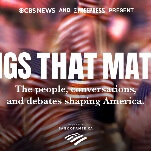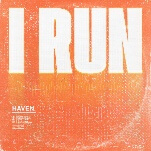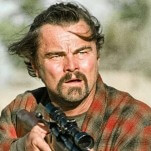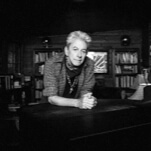Bad at 25: Looking back at how a lost, lonely Michael Jackson found his way

“Thriller is the sound of absolute victory, where the hero is carried into the sunset on the shoulders of friends; Bad is what happens the following morning, when the hero must face living the rest of his life in the shadow of all that, with old, unshakeable demons still intact.” — Steven Hyden, We’re No. 1
Is it possible for an octuple-platinum album to be underrated? For decades, Michael Jackson’s Bad has been defined more by what it didn’t do than what it did. Going into Bad, Jackson was the biggest star in the world, coasting on Thriller, the biggest-selling album of all time. But rumors about Jackson’s bizarre personal life were already starting to leak, and some of the pop star’s business decisions—Pepsi endorsements, exorbitantly priced concert tickets, buying the publishing rights to the Lennon/McCartney song catalog out from under the nose of his pal Paul McCartney—made Jackson seem more mercenary than his upbeat, childlike image led fans to believe. As Steven Hyden explained in his “We’re No. 1” column for this site, Bad represented a clear demarcation point for many, between the nimble, creative Michael Jackson and the lead-footed, self-promoting “King Of Pop.”
Now, though, with the 25th anniversary of the release of Bad—celebrated by a new deluxe CD reissue and a DVD of a 1988 Wembley Stadium concert—the push is on to rehabilitate the record’s rep. This is, after all, the fifth-best-selling album of all time by some measures, and one that set a record by generating five consecutive No. 1 singles on the Billboard Hot 100. And as Spike Lee’s new documentary Bad 25 notes, the album, its videos, and the subsequent tour all had a huge impact in the African-American community, particularly among budding musicians. Kanye West, Mariah Carey, Cee Lo Green, and ?uestlove are just a few of the artists who testify to Lee about what Bad meant to them. Lee also gets appreciations from the people who worked with Jackson on the album and its peripherals, all of whom rave about the man’s genius, and provide persuasive examples.
Bad 25 is currently on the festival circuit—it played Venice and Toronto earlier this month—and is scheduled to air on ABC in November. It’s a good documentary, but a bit scattered and incomplete. Because Jackson all but shut himself off from the media around the time of Bad, his own perspective is largely missing from Lee’s film. And Bad 25 raises all kinds of provocative questions—about the rumors surrounding Jackson and the degree to which his race affected the press’ reaction to his work—that are swiftly dropped. Perhaps because the documentary was made in conjunction with the Bad anniversary, Lee tends to skip ahead to the next topic rather than digging deeper.
Still, Bad 25 is successful at creating a convincing counter-narrative to the pervasive “…and here’s where Michael Jackson lost his soul” take on Bad. From the point of view of the people who were inside his circle, Jackson post-Thriller was reacting heroically to some difficult circumstances. That album was an unprecedented phenomenon: an international sensation that just kept generating hits and sales, making Jackson so famous that he couldn’t go out in public without a wig and heavy makeup. Yet Jackson didn’t always get his due credit for Thriller. Producer Quincy Jones and his team of songwriters and session men were often cited as Thriller’s real creative forces, even though Jackson wrote and co-produced almost half of the album. And Jackson didn’t tour behind Thriller, choosing instead to make another album with his brothers and tour with them, in 1984. So to some extent, Jackson regarded Bad as his real solo debut. He wrote nine of its 11 songs, and co-produced them all, with Jones. He was heavily involved with the marketing and the videos, and he backed the whole enterprise with his first-ever solo tour, which circled the globe and ran for well over a year.
Frankly, the level of calculation that Jackson brought to Bad still affects the album’s overall quality. In Bad 25, Jackson’s team admits he had wanted to work with Prince, and to duet with Whitney Houston, because he saw them as his competition in the marketplace. (Instead, the big star duet on Bad is with Stevie Wonder, on the pleasant but forgettable “Just Good Friends,” which is notable primarily because Wonder’s magnificent run of albums during the ’70s provide something of a model for Jackson’s pop/rock/R&B crossover in the ’80s.) The sound of Bad seems inorganically of-the-moment, from the heavy use of electronics to the touches of rock, gospel, and worldbeat.
A quarter-century after its release, Bad at times sounds more like a greatest-hits collection than one cohesive vision. For example, it’s odd that “Man In The Mirror” and “I Just Can’t Stop Loving You” emerged from the same album’s recording sessions, given that the former sounds more like the pop of the ’90s, while the latter’s more ’70s-ish. It’s odd also that on its original vinyl and cassette versions, Bad ends with “Smooth Criminal,” which is an energetic song, but hardly a grand finale. Meanwhile, for anyone who was alive and aware of popular culture in the late ’80s, it’s hard to hear Bad’s title track and not think of Pepsi commercials, which robs the song of some sting.
There’s a fair amount of contrivance, too, to the personae Jackson adopts throughout Bad, from street tough to lovesick horndog. This is where the wide awareness of Jackson’s private life works against him. Whether Jackson really slept with the Elephant Man’s bones (or worse), the public knew Jackson wasn’t some badass stud, beating up dudes and bedding ladies by the score. In other words, Jackson wasn’t just wearing disguises when he went on outings; he was playing dress-up with his songs, too. Outside of “Leave Me Alone” (a CD bonus track that can be read as Jackson’s angry response to his critics) and “Dirty Diana” (reportedly based on Jackson’s own experiences with groupies), Bad isn’t exactly confessional.








































